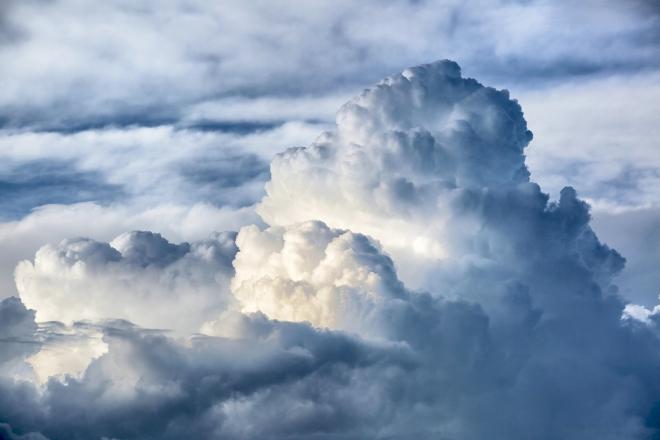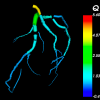Modelling the mysteries of cloud formation
The Challenge:
Gilles Bellon was modelling how clouds form and accumulate into large groups. But simulations of weather events are too large for standard computers, so the model stood largely unused for a decade.The Solution:
Gilles worked with NeSI research software engineers to apply their expert advice and access to NeSI's Mahuika supercomputer to optimise and run his model.The Outcome:
NeSI helped Gilles achieve a 19x speedup of his code. By better understanding the physics of cloud formation, we can move closer to better weather prediction for the benefit of New Zealand industries and communities.
While the basic functions of precipitation which form clouds are known, meteorologists struggle to predict exactly when and where clouds form. Dr Gilles Bellon is an atmospheric scientist at the University of Auckland. With help from NeSI’s research software engineers and Mahuika supercomputer, Gilles has developed a model to help explain the physics of cloud formation.
“There are big cyclonic circulations that bring water to us in New Zealand. The best studied is the Madden-Julian oscillation. It’s a huge patch of cloud that starts in the Indian Ocean, near the equator, then moves towards us causing our winter storms. That cloud form is important to us here in New Zealand, but there are many smaller formations too,” Gilles said.
Tracking the formation of clouds can lead to more accurate weather forecasting, which has carry-on effects for agriculture, severe weather planning and many other industries.
Alongside the practical applications, this research will help expand our understanding of clouds. Despite humanity scrying the weather for millennia, many mysteries remain of the physical processes behind cloud formation.
“Cloud formations build up spontaneously, but we don’t understand why. There are mechanisms that aggregate clouds. I’d like to know whether I can copy those mechanisms with my model. That’s why I approached NeSI,” Gilles said.
Past models have shown the atmosphere has variations in humidity. If an area has less humidity then its surrounds, the air becomes cooler and denser.
This can create a pressure column which pulls down colder, drier air from higher up. This dry vortex can pull clouds from hundreds of kilometres around, creating larger weather events like rainstorms and cyclones.
“We’ve seen that in models but whether it happens in real life is uncertain. There could be other mechanisms as well. These interzonal clouds that last from a week to a season, are used in Australia and New Zealand to forecast weather weeks in advance,” Gilles said.
“Farmers use these forecasts to decide how many heads of cattle to put into the field. I want to understand how these cloud formations link to larger meteorological disturbances.”
Gilles developed his model a decade earlier but put it aside due to the difficulty running it on a standard computer. After working with NeSI on other projects, Gilles was encouraged to use the model on Mahuika and applied for a Consultancy project. From there, Gilles worked with NeSI research software engineers, Alexander Pletzer and Wolfgang Hayek, to optimise his model’s code.
“When I approached them, I had one method I felt was quite optimal. They looked at my model and suggested I parallelise my data processing. We didn’t need to change the equations beneath my model in order to do this. We could simply use some data packages to make it run faster,” Gilles said. “Alex and Wolfgang know what they’re doing. They had the expertise to come up with ideas and research which packages would be useful. It was great to have experts like that.”
NeSI offers supercomputers with different hardware: different Computer Processing Units (CPUs) and Graphical Processing Units (GPUs). Some software might run faster on one architecture, others on another.
Ultimately, Alex and Wolfgang helped Gilles rewrite his program so that he could run effectively on any of those platforms, and on future platforms as well. Together they achieved a 19x speedup of the code. This means Gilles can now tackle problems with higher resolution, which is critical to the understanding of cloud genesis.
The next stage of Gilles’s research is to find which variables may cause clouds to accumulate. Gilles needs to run a large number of simulations on NeSI’s platform. He said the first step is to find if randomised variables will be enough to form clouds or if it requires specific conditions.
“There needs to be some random forces to the model. I’m trying to include that now. I will also test if adding a memory effect alters formations. This would mean remembering which gridpoints previously had clouds from one moment to another. Finally, does the formation of one cloud help accumulate others? These are all things I need to test,” Gilles said.
The goal of this research is to develop a better understanding of cloud formations. While this contributes to the knowledge we have of our natural world, it may also help many industries and communities who need reliable weather predictions to plan their work and safety.







